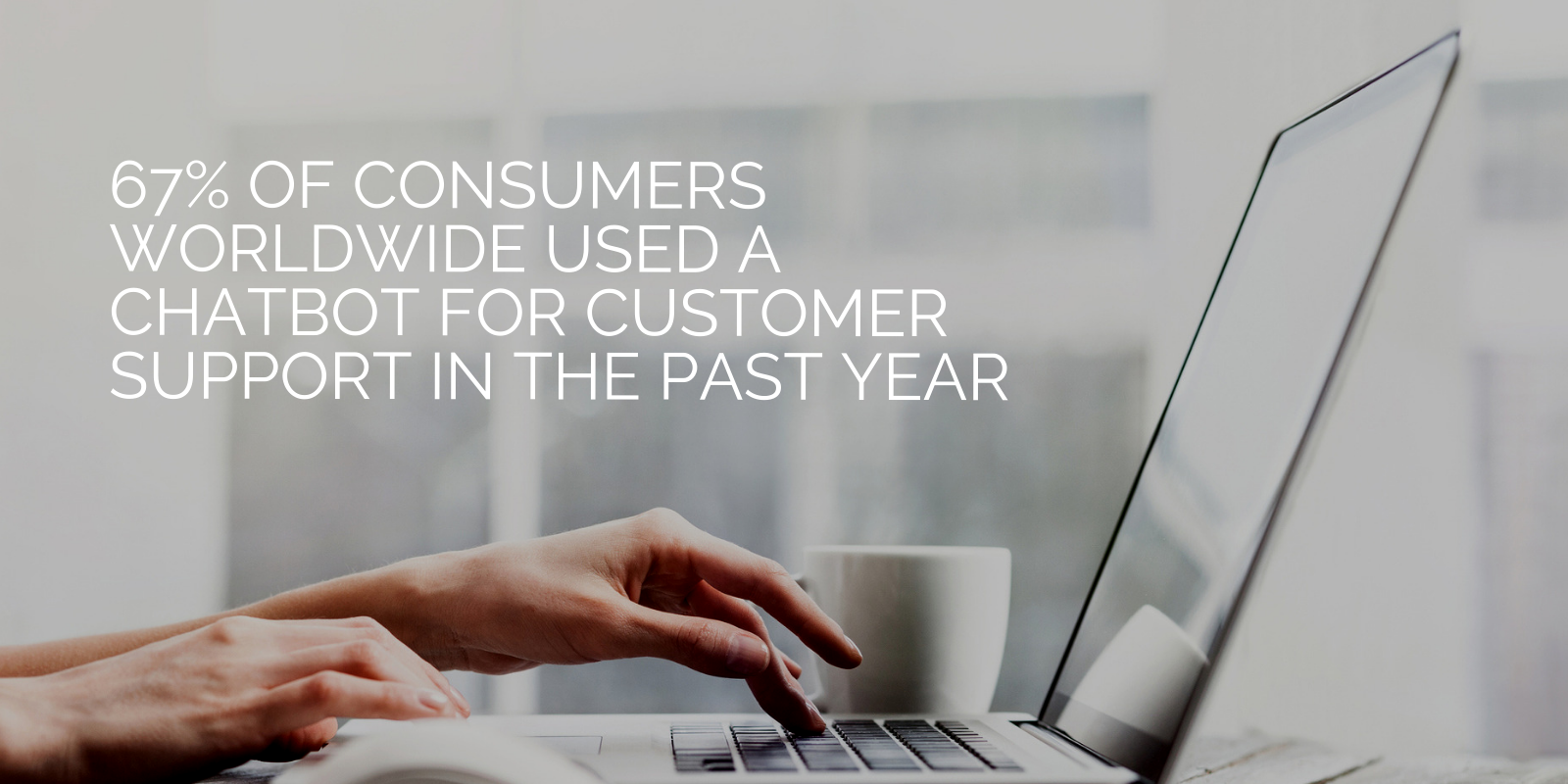
The changes in 2020 will create just enough anxiety in digital marketers to keep the coffee and libations industries booming. AI will continue to grow and impact how we interact with our audiences and understand our own content.
As usual, old trends will slowly fade away and get replaced with new, shiny trends. Yet, the list below isn’t all new trends. In fact, most are things you’ve heard of and may be doing.
In 2020, a lot of familiar best practices will get a facelift, and underutilized tactics and software will become more vital for data-driven decision making.
Here are the marketing tactics you need to consider as you plan your 2020 marketing.
Find ways to get links other than guest posts
Obviously, SEO is important, but it’s getting harder and harder every year. Google has a potentially big algorithm change coming in March of 2020 that will reduce the value of guest posts in consideration for search rankings. So, if your SEO strategy is 100% based on guest posting, diversifying will be important to maintain your rankings.
Invest in original research
With the value of guest post links potentially waning, content creators will look for other ways to build great inbound links.
One of the best ways to get inbound links is to do original research that is of value to your industry. Original research gives your brand something to share with the industry that is new and exciting. It creates motivation to link because it is based on actual data and will be a talking point in the industry. As a result, original research gets a lot of earned media and social coverage, which helps boost your search rankings.
Many organizations currently rely on original research for their domain’s overall authority and inbound links, but in 2020, more and more will join the fold, especially with online research becoming easier with services like Google’s Marketing Platform.
Focus on medium-tail keywords
The days of long-tail keywords are nearly obsolete. Google has revised its algorithm to understand that a lot of similar long-term keywords are actually talking about similar things. The result? Longer form content that speaks at length about a subject gets ranked higher than pithy posts that are focused on extremely specific keyword phrases.
Truly understand where local and national SEO start and stop
SEO used to be a one-trick pony, with only a single algorithm to figure out. Since Google local began back in 2004, the tides have been shifting. Many industries are seeing this shift, as content that used to rank well nationally is now being overrun by local results, pushing older content down in search rankings.
For example, areas such as franchise SEO now require a blended method of national and local search for their search strategies — things that used to be handled by entirely separate teams at one point.
Understand where your organization should be optimizing for local search vs. national search to avoid losing existing SEO traction and gaining ground on competitors who are not keeping up with this trend.
Use chatbots to drive lead generation
67% of consumers worldwide used a chatbot for customer support in the past year. Though working with a real human in preferred by most people, the availability and quick answers chatbots provide have made them invaluable in customer support and even lead generation.
67% of consumers worldwide used a chatbot for customer support in the past year. Click To Tweet
Chatbots can help prospects understand more about your solutions by answering prospects’ direct questions quickly. Getting these quick responses without feeling the pressure of having to talk to sales right away will help drive more “maybe” prospects into solid leads.

Create long form, educational videos to rise in YouTube rankings
It used to be standard practice that short videos were the way to go. But this was mostly because people didn’t want to spend over 90 seconds watching a video that’s just a disguised ad for your organization.
Now, people don’t want to spend ANY time looking at a video that’s an ad for your organization. So, what’s the key to success on YouTube then? Creating content that people actually need and want to watch — GASP!
How do you do create something that your audience needs and wants to watch? These videos need to be educational AND entertaining to have sticking power.
Videos with low audience retention get booted pretty quickly from YouTube rankings, while those with high retention are moved up. So, follow YouTube’s lead and favor longer, educational videos (10+ minutes) in your marketing strategy, and you’ll see the results when it comes to search and recommendations.
Now, I know what you’re thinking, “Wait, did he just say 10 or more minutes? Everything out there says the top videos on YouTube are 2-3 minutes!” Correct, they are. Because most of the top videos on YouTube are music videos. But, if you look at the most successful YouTube channels out there, they average between 13 and 14 minutes per video. Your goal is to create a great channel, right? So, go for amazing, longer-form videos that really address your audience’s pain points.
Follow through with remarketing
One of the most often underutilized benefits of online display advertising by the majority of companies is a great remarketing campaign. Getting people to your site once is the hard part. Once you get them there, you now have the ability to target them with inexpensive, effective messaging wherever they are online.
It’s relatively low-cost given you only pay for the ad clicks you get, and it is not incredibly hard to do. I see so many companies that have Google Ads set up for PPC search, but don’t have remarketing set up. Also, most marketing automation systems now allow you to remarket to your existing leads based off of what they do on your site. So, if that person who downloaded a white paper 6 months ago momentarily came to your site today, you could have your email system send them a special offer since you’re top of mind for them. If you take these extra steps, you’ll be ahead of the pack in 2020.
Make Google Analytics a foundational part of your marketing toolkit
It’s robust. It provides value beyond what most people can possibly imagine. And it’s free. Google Analytics is a real gift to the digital marketing universe that is really not used enough.
The main reason it’s not used enough is that it comes across as overly complex. And admittingly, it is. But learning the basics of Google Analytics can help you better understand how people truly use your site and where you have opportunities to make your website more intuitive and useful.
Use attribution modeling to invest your marketing dollars wisely
The adage, “I waste 50% of my marketing budget, but I don’t know which 50%” is no longer an excuse.
Understanding the channels and campaigns that truly drive success should be core to a digital marketing strategy. Unfortunately, many organizations don’t pay attention to which campaigns and channels bring traffic in and which get them to actually convert. This inevitably leads to marketing organizations putting dollars and resources into ineffective endeavors.
Attribution modeling helps you understand which channels and campaigns should truly get credit for the conversions that happen on your site. If you’re not familiar with this process, start by checking out the different types of attribution modeling. Once you understand the different types of attribution, you can identify which ones fit best with your business.
Go full funnel on your content marketing
For most content marketers, a win happens once a prospect has found content, engaged with it, and converted to a sale or a lead. But what happens next?
Content marketing brings the most value when it supports the entire buyer’s journey, from the top of the funnel, through conversion, through the sale, into supporting that client’s success as a customer, and into elevating them into a cheerleader for your brand. Look at different areas where content can multiply a client’s experience throughout the journey with you. Find them and make their day.

Optimize SEO click through rates
Google RankBrain is putting more emphasis on click-through rates in search results.
That’s right, it’s not just about creating great content and getting solid backlinks anymore. Now we must get people’s attention on search engine results pages (SERPs) and drive them to click our content instead of the other results. Don’t let this change worry you! We already created a post on increasing search rankings using Google Search Console to help.
Weigh the importance of mobile and desktop optimization equally
The world accesses your marketing from their phone regardless of the business you are in. You are probably already working on making your mobile experience as good as it can be, but what about your desktop experience?
Personally, I’d love to get rid of the term “mobile first” when it comes to design. Mobile and desktop are completely separate user experiences. What works for one will most-likely not work for another. To put the best marketing out there, focus on making an experience that is great on mobile AND on desktop.
For example, it’s easy to scroll on mobile devices, but loading new pages is a huge pain. So don’t shy away from long pages on mobile – just make sure you’re not using huge imagery that takes forever to load.
And on desktop, if you’re using hamburger navigation that’s the same as the mobile site, you’re creating unnecessary customer friction. Don’t make desktop users click to see an abbreviated menu. It can’t be a secret anymore, that’s just bad UX.
Make your audience the hero
If your content talks all about you, you’re going to lose your audience. There’s an unspoken rule in marketing — no one gives a $#!^ about your brand. All they care about is themselves.
When creating content, don’t focus on what YOU can do. Focus on what your customer can do BECAUSE of you. For example, stating that your microphone you sell is “best in class” and “industry leading” isn’t as effective as saying someone who buys the microphone will be able to record incredibly crisp, professional audio without having to shell out big bucks.
Identify true pain points for content
How many times have you started to read an article about a topic, only to find out it didn’t answer your actual pain point? Start paying attention, because it probably happens more than you can count.
Our natural reaction is to bounce from the page and back to the search results to find another post on the subject.
It’s not enough to just write content about a specific topic to save your audience from this experience. You need to know what the audience’s actual pain points are that the content needs to address. Below is how to do this.
Increase the effectiveness of your content with content intelligence
Using data-driven insights from a content intelligence platform enables you to quickly identify topics your audience truly cares about, their true pain points, the topics they will engage with in the future, and which topics convert to deliver on business goals.
Content intelligence platforms also identify how you stack up against your competition on a topic-by-topic basis, including where you may have existing content gaps that competitors are already exploiting.
As a final cherry on top, these platforms make sure that you can measure your success as you go. This real-time information allows you to course correct and adjust your strategy in a way that will get you to your end goals.
Pillar, Cornerstone and Brick content
When creating content, it’s important to know not only what you’re creating and what the audience’s pain points are, but also how important the content is to your own site.
Online content can be easily categorized into three buckets:
- Pillars
- Cornerstones
- Bricks
Pillars are main sections of your site. They are usually part of the main navigation and are essential to the success of your business.
Cornerstones are huge pieces of content that you create to impact your industry. Major research reports, ultimate guides, etc. are all cornerstones. These content pieces represent an A-to-Z journey of how to do or make sense of something and can be thousands of words long.
Bricks are regular-style blog posts and normal videos that are produced on a regular basis. Usually consisting of 600-1,000 words.
Find out if your brand could benefit from live video
Not every brand is cut out for doing live video, but it’s featured prominence on Facebook, Instagram and YouTube make it a great way to stand out from the crowd. Just make sure your brand is right for live video.
Watching live videos from a B2B brands can sometimes be a bit cringeworthy, especially when they are simply live commercials or videos of someone walking through a conference with shaky iPhone video. These videos aren’t overly helpful or entertaining. They’re just cringeworthy. Don’t be cringeworthy.
Nurture the right social influencer network
Engaging with social influencers of all sizes is essential in 2020.
It’s not just about numbers, it’s about hitting the right audiences with the right messages. Sometimes that means engaging with influencers who have very small numbers of followers, but whose followers are highly engaged and see that influencer as a great authority.
Sometimes called “microinfluencers”, these small, yet mighty influencers may have a bigger impact on bottom-line success than the biggest celebrity you could afford.
What do you think?
Just keeping up with a couple of these marketing tactics should significantly help your 2020 efforts.
